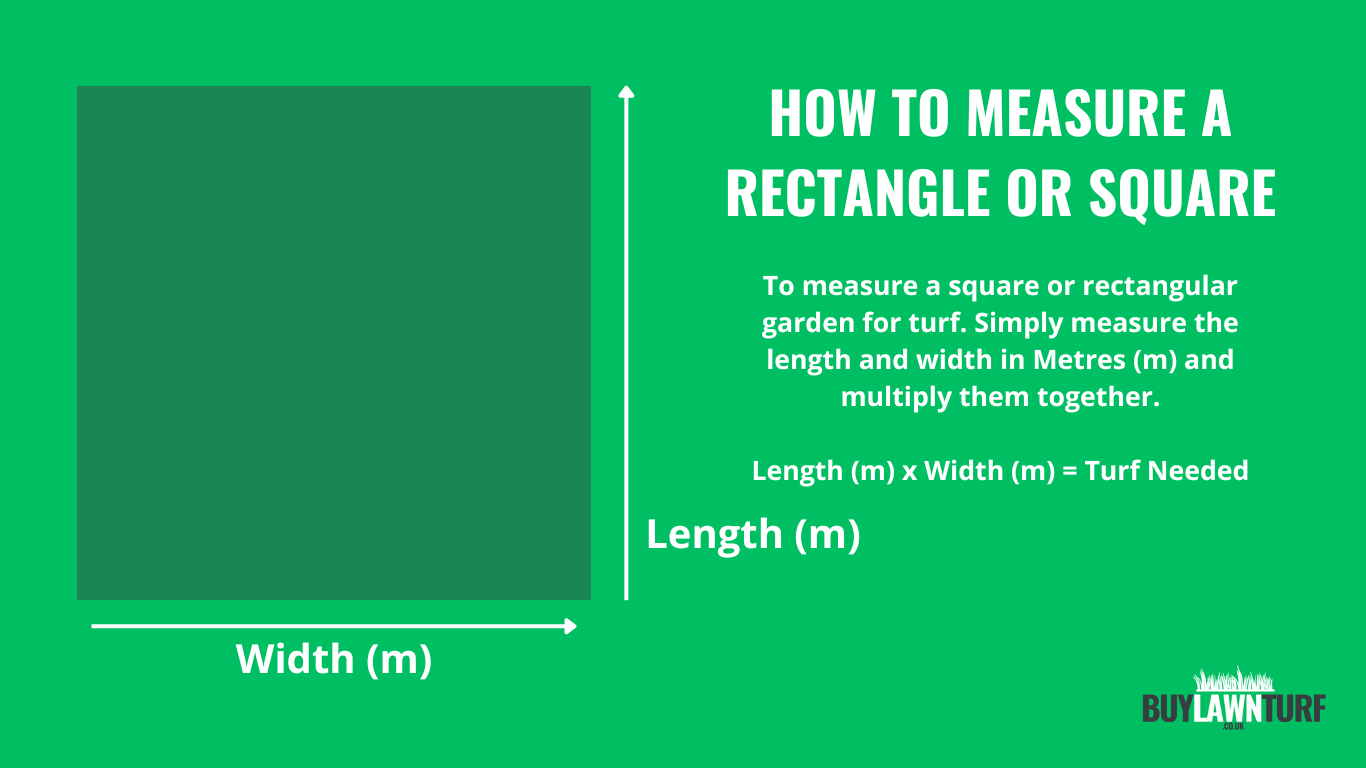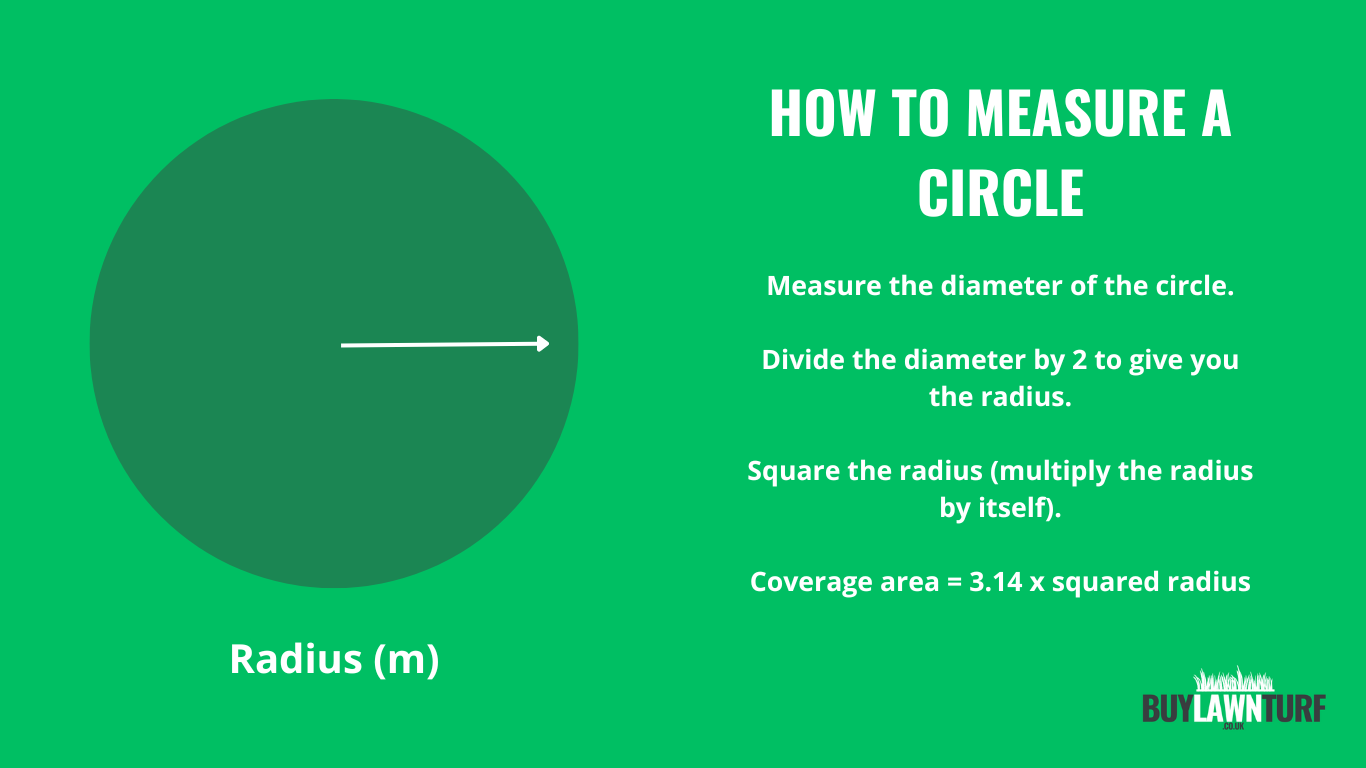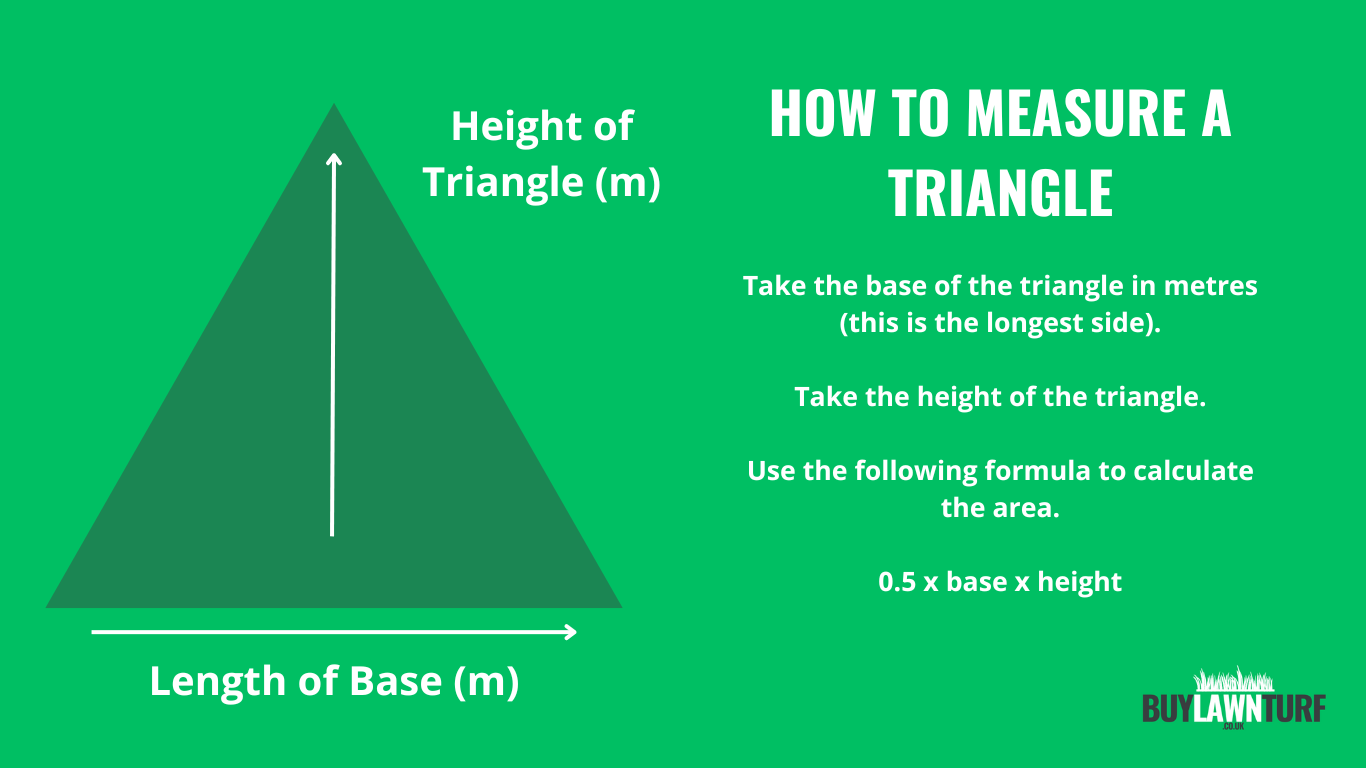How to measure for turf? Sounds simple, but there’s more to it. Measuring your garden for fresh new grass doesn’t need to be difficult. This handy guide will explain how you can easily measure your garden so you know exactly how much turf you need for your project. Simply follow the instructions provided to learn how to measure a garden for turf, or even use our handy turf calculator once you know your dimensions to confirm how much you need.
Before getting into the detail. Here’s a quick fire summary of what you need to do to measure you garden for turf:
- Prepare your soil – Do this by making sure you have measured for the depth of the area.
- Measure with a tape measure – Use a long, easy to use tape measure, preferably one that measure the full length of space needed.
- Measure in metres – This will make calculating how much you need easier.
- Measure everything twice.
- Write down your measurements and keep them safe.
- Use a calculator or online turf calculator – always double check your measurements and numbers.
- Add 5-10% more turf than you need to account for errors and waste.
How to Measure for turf with a Square or Rectangle Garden

To figure out what you need for a square or rectangular garden, the formula is actually pretty straightforward and one of the easier shapes to measure for a new lawn.
The formula you need to use to confirm the amount of turf you need is simply the length multiplied by the width – preferably in metres as this is the most common unit of length used by landscapers and turf suppliers such as ourselves.
Here’s an example:
My lawn is 12m in length and 8m wide.
To confirm how much I need I simply multiply 12m x 8m which is equal to 96m2. This is the amount of turf I would require. Once you know the length and width, you can use our turf calculator which will quickly tell you the total area and also provide you with an additional figure that includes an additional 5% for any wastages.
How to Measure for turf with a Circular or Oval Shaped Garden

To calculate how much turf is needed for a circular shaped garden, the process, again, is actually fairly easy. To know how many rolls of turf you need, you’ll have to measure the diameter of the circle. This is the total width of the circle.
Once you know the diameter, you need to calculate the radius. This is the measurement from the circle’s centre, to the perimeter. The easiest way to figure this out is to divide the diameter by two.
You now know the radius so you can now determine the amount of turf needed. To do so, you multiply the radius by itself and then multiply that figure by 3.14.
To recap:
- Measure the diameter of the circle
- Divide the diameter by two to get the radius
- Multiply the radius by two to get the squared radius
- Multiply the squared radius by 3.14
For example:
My circular lawn has a diameter of 10m. The diameter divided by two is 5m. To square the radius, I then do 5m x 5m which is equal to 25m2. Finally, to correctly confirm how much turf you will need, you multiply 25m2 by 3.14 which gives you a total area of 78.5m2.
How to Measure for turf with a Triangular Shaped Garden

To work out how much turf you need to order for a triangle shaped lawn or garden, there are just two simple steps needed. First, you need to measure the length of the base of the triangle, preferably in metres. And then to work out the area that remains, you need to determine the height of the triangle – again, preferably in metres.
Once you have these numbers, you then use the following formula:
0.5 x base x height
Let’s take a look at an example:
My triangular garden has a base length of 9m and the height is 5m. To confirm how much garden turf I need I then do 0.5 x 9m x 5m which gives me a total area of 22.5m2.
What Not to Do When You Measure Your Garden and learning how to measure for turf
The two most common mistakes gardeners and landscapers make when they measure for turf include:
- Not being accurate enough. The old saying goes “measure once, cut twice” and that can certainly be applied to turf measuring. It’s important to make sure that you’re being as accurate as possible with your measurements. A laser level is one of the most popular ways to measure a garden followed by a measuring wheel.
- Forgetting about dips, slopes and uneven surfaces. This is something that happens A LOT. That’s why our turf calculator will provide you with two measurements for area. The first being based on the minimum amount of turf rolls needed. The second will provide you with additional coverage to allow for wastage and slopes. There is a rather complicated way to calculate the sloped area, but it’s easier to order an additional 5-10% of what’s needed.
Common FAQs when learning how to measure for turf
How Do I Calculate How Many Rolls of Turf I Need?
This completely depends on the shape of your garden, and how much a roll of turf covers. As standard, our fresh turf and artificial grass both cover 1m2 in length as a single roll.
Using the steps provided in this guide, input your measurements into our calculator to get an estimated minimum area.
How Many Square Metres is One Roll of Turf?
Each single roll we have available covers 1m2. However, this may differ for artificial grass.
How Do I Account for a Dip, Uneven Surfaces or a Slope?
There is a formula that you can use to account for this. However, for most gardeners, the easiest way is to simply order an additional 5-10%. To do this, just measure your lawn in metres (depending on the shape, you’ll need to do this in different ways) and then multiply the area required by either 0.05 for 5% or 0.10 for 10%.
For example:
If my square garden requires 120m2 and I wanted to order an additional 10%. I just do 120m2 x 0.10 which is equal to 12m2 and then add that to the total area of the garden, which would be 132m2.